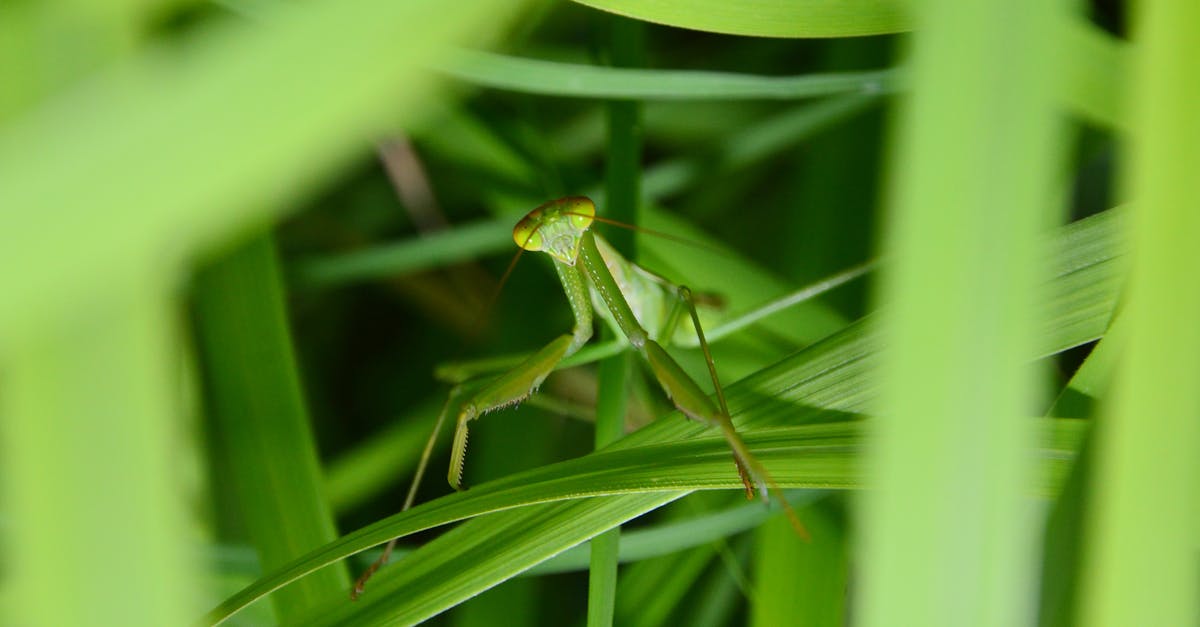Evolving Farming Practices: Harnessing Insect Protein for Sustainable Agriculture

Insect Protein as Animal Feed: Sustainable Innovations in Agriculture offers a comprehensive exploration of the burgeoning trend of incorporating insect protein into animal feed. With the rising concerns over sustainable agricultural practices and the necessity to meet the growing global demand for animal protein, the utilization of insect protein represents a provocative paradigm shift. This article delves into the multifaceted landscape of insect protein and its profound implications for the agricultural sector. By examining various facets, from benefits to challenges, as well as the regulatory environment and future prospects, this piece aims to provide a holistic understanding of this sustainable innovation.
1. Introduction to Insect Protein
Thank you for reading this post, don't forget to subscribe!
In recent years, the use of insect protein in agricultural practices has sparked significant interest and debate within the agricultural community. As global population growth continues to strain our existing resources, novel solutions are imperative, and insect protein stands out as a promising one. Understanding the concept and significance of insect protein in agricultural practices is crucial to appreciating its potential impact. Insects are renowned for their impressive conversion of organic waste into high-quality protein, making them an attractive and sustainable alternative for animal feed. This unique attribute not only addresses environmental concerns but also offers a viable solution to the escalating demand for protein sources in animal feed. By tapping into this resource, the agricultural sector can potentially mitigate the pressure on traditional protein sources, contributing to a more sustainable and efficient livestock production system. The intricate understanding of this concept positions insect protein as a game-changer in revolutionizing agricultural practices, fostering resilience against environmental challenges and resource limitations.
2. Benefits of Insect Protein in Animal Feed

The benefits of incorporating insect protein in animal feed span a wide array of advantages that have captured the attention of agricultural experts and stakeholders globally. Firstly, insects possess a remarkable ability to convert organic waste into protein, offering a sustainable and eco-friendly solution to address the growing demand for animal feed. This sustainable protein alternative contributes to reducing the environmental impact of livestock farming by diverting organic waste from landfills and converting it into a valuable protein source, thereby fostering a circular economy approach. Moreover, insect protein exhibits high nutritional value, delivering essential amino acids required for animal growth and development. This nutritional profile aligns with the dietary needs of various livestock species, making it a promising substitute for traditional protein sources. Additionally, the efficient feed conversion rate of insects, particularly in comparison to conventional protein sources, presents a cost-effective and resource-efficient solution for animal husbandry, potentially providing economic benefits to farmers and the industry as a whole.
3. Sustainable Innovations
Sustainable innovations in agriculture encompass a wide array of solutions that contribute to the overall resilience and efficiency of the industry. Within this landscape, the integration of insect protein represents a compelling and sustainable agricultural solution. One of the key sustainable characteristics of insect protein is its significantly lower environmental footprint compared to traditional protein sources. As the global demand for animal protein surges, there is a growing need to seek alternative, environmentally friendly protein sources, making innovative solutions like insect protein highly relevant. Additionally, technological advancements play a pivotal role in the sustainable integration of insect protein within agricultural practices. Companies and research institutions have been investing in novel technologies to scale up the production of insect protein, while simultaneously focusing on optimizing the feed conversion efficiency and exploring innovative methods for utilizing insect protein across various animal species. These advancements are vital in ensuring the scalability, cost-effectiveness, and versatility of insect protein within the broader agricultural landscape, thereby forging new frontiers in sustainable livestock production and environmental stewardship.
4. Challenges and Considerations

Implementing insect protein as animal feed presents a range of challenges and considerations that warrant careful examination. First and foremost, the social and cultural acceptance of insect protein in animal feed represents a notable hurdle. While insect protein offers a sustainable and resource-efficient alternative, overcoming societal perceptions and cultural barriers remains crucial for widespread adoption. Additionally, the scalability and standardization of insect protein production pose significant challenges. Ensuring consistent quality, quantity, and safety standards at scale demands rigorous technological and infrastructural investments. Furthermore, regulatory frameworks and policies surrounding the use of insect protein in animal feed require careful attention. As this is a relatively novel area, navigating existing regulations and advocating for supportive policies is essential to facilitate its integration within mainstream agricultural practices. Moreover, addressing concerns related to allergens and toxins within insect protein, as well as potential ecological impacts, emerges as a critical consideration. Understanding and mitigating these aspects are paramount for establishing insect protein as a safe and reliable component of animal feed, aligning with industry and consumer expectations.
5. Regulatory Landscape
The regulatory landscape surrounding the use of insect protein in animal feed is a critical aspect that shapes its integration into agricultural practices. As this innovative approach gains traction, understanding the existing regulatory framework and current policies becomes paramount for stakeholders across the agricultural and food sectors. In many regions, the approval and authorization processes for insect protein in animal feed are evolving, reflecting the need to adapt regulations to accommodate sustainable protein alternatives. Regulatory bodies are actively engaged in evaluating the safety, nutritional value, and environmental impact of insect protein to establish comprehensive guidelines for its utilization in animal feed. Additionally, addressing labeling requirements and consumer transparency concerning the use of insect protein in animal feed is a focal point for regulatory discussions, aiming to ensure informed decision-making and uphold confidence in the food supply chain. Furthermore, international collaboration and harmonization of regulatory standards are essential to facilitate the global trade of insect protein-based animal feed and its seamless integration into diverse agricultural systems. As the regulatory landscape continues to evolve, staying abreast of these developments is crucial for industry players, policymakers, and consumers to effectively navigate and embrace the use of insect protein as a sustainable component of animal feed.
6. Future Outlook
The future outlook for integrating insect protein as a sustainable solution in agriculture is rife with potential and ongoing developments that promise to reshape the agricultural landscape. As the demand for alternative protein sources continues to surge, the role of insect protein in animal feed is poised to expand significantly in the coming years. Harnessing cutting-edge technologies and scientific advancements, researchers and industry experts are exploring optimized cultivation methods and innovative processing techniques to enhance the efficiency and scalability of insect protein production. Moreover, ongoing efforts to maximize the nutritional quality of insect protein while minimizing its environmental footprint will pave the way for its widespread adoption within animal feed formulations. In the realm of sustainability, the future outlook for insect protein is closely tied to its capacity to address key environmental challenges, such as resource scarcity and greenhouse gas emissions, positioning it as a pivotal element in sustainable agricultural practices. As consumer preferences continue to evolve towards environmentally conscious and ethical consumption, the future landscape also hinges on fostering greater awareness and acceptance of insect protein as a viable and sustainable alternative, offering immense potential for diversifying protein sources in the global food supply chain.
What are the environmental benefits of using insect protein in animal feed?
Using insect protein in animal feed offers several environmental benefits. Insects have a significantly lower environmental footprint compared to traditional protein sources, requiring less land, water, and feed to produce the same amount of protein. Additionally, insects can be fed on organic waste, contributing to waste reduction and promoting a circular economy approach within the agricultural sector.
Are there any safety concerns associated with using insect protein in animal feed?
The safety of using insect protein in animal feed has been thoroughly studied. Regulatory bodies and research institutions have evaluated the safety, nutritional value, and potential allergens of insect protein, ensuring that it meets the necessary standards for animal consumption. However, it is essential to adhere to established guidelines and quality control measures to mitigate any potential risks associated with its use.
How does the cost-effectiveness of insect protein compare to traditional protein sources in animal feed?
Insect protein demonstrates promising cost-effectiveness due to its efficient feed conversion rate and its potential to be produced utilizing organic waste. While initial investment in infrastructure and technology is required, the scalable nature of insect protein production offers long-term economic benefits, potentially reducing dependence on conventional protein sources and improving overall cost efficiency in animal feed formulations.
What steps are being taken to address societal acceptance and regulatory challenges associated with insect protein in animal feed?
Efforts are underway to address societal acceptance and regulatory challenges related to insect protein in animal feed. These efforts include educational campaigns to raise awareness about the benefits of insect protein, engagement with regulatory authorities to align policies with sustainable agricultural practices, and collaborative initiatives within the industry to establish standardized quality and safety parameters for insect protein-based animal feed.




